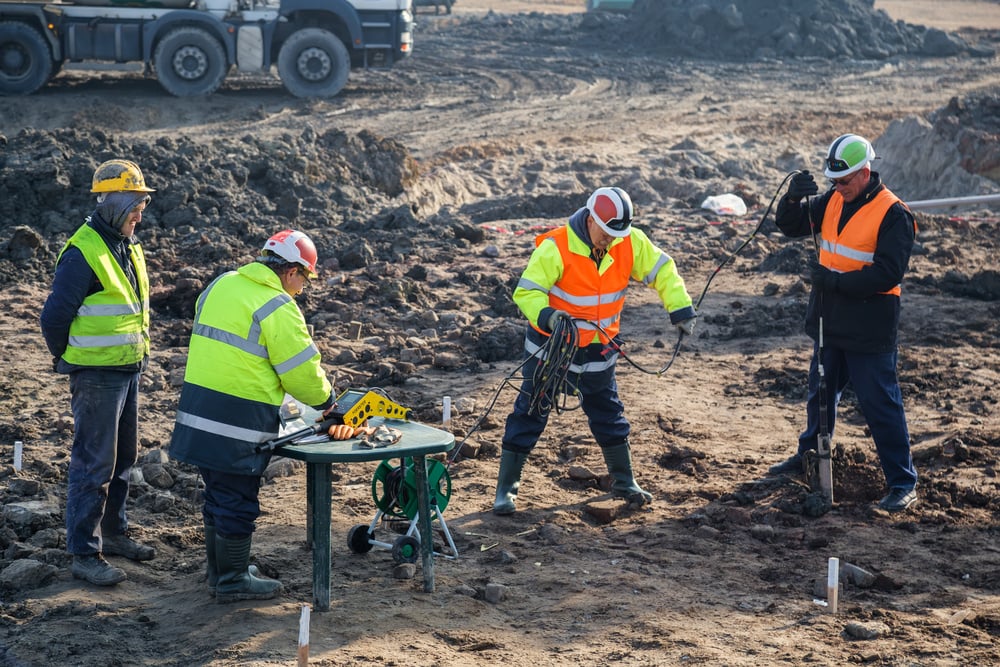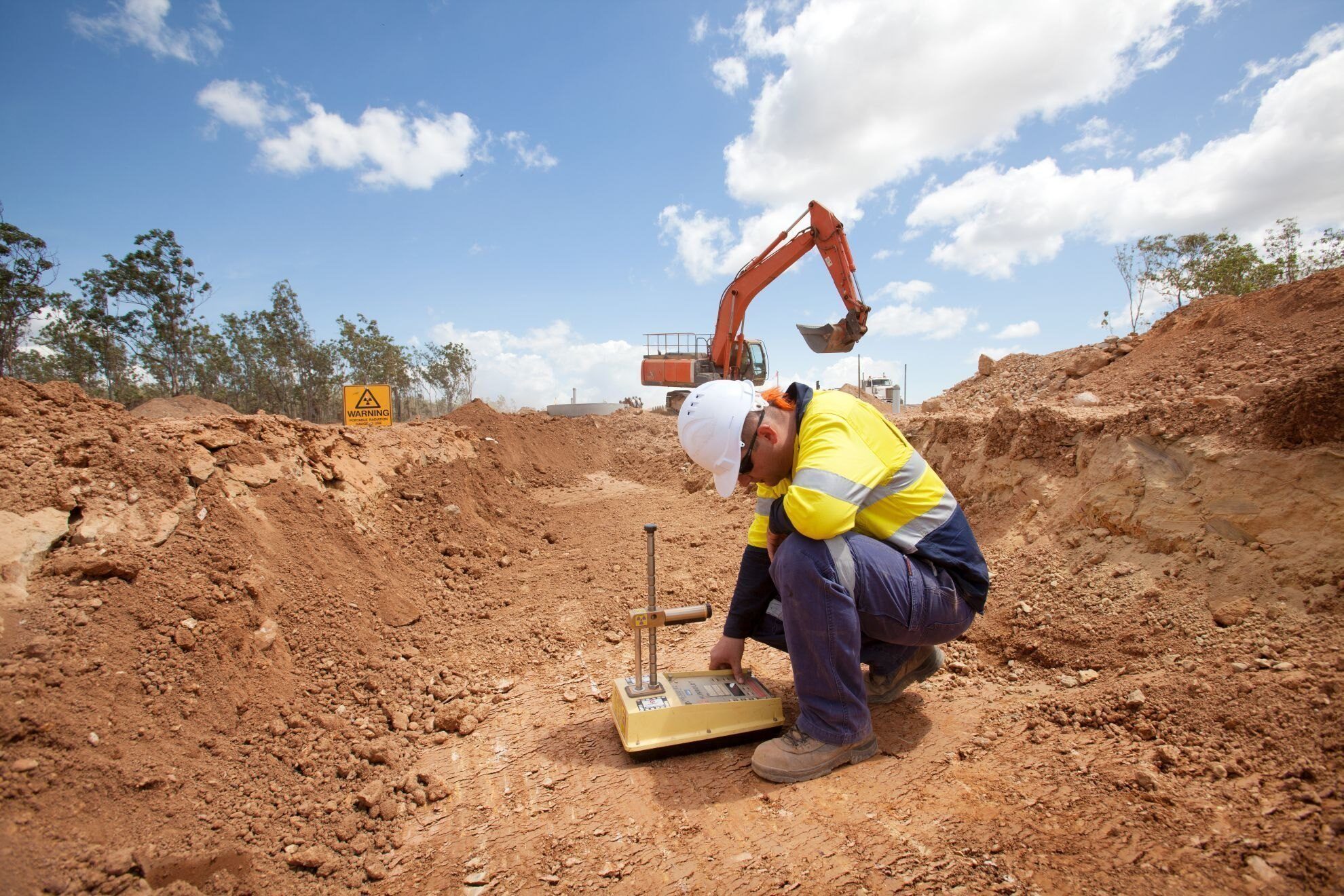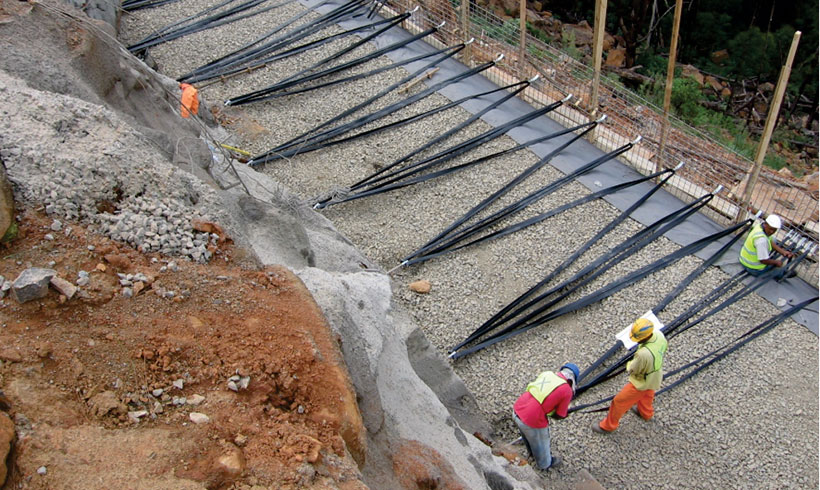Geotechnical Engineering For Construction Projects Can Be Fun For Anyone
Geotechnical Engineering For Construction Projects Can Be Fun For Anyone
Blog Article
3 Easy Facts About Geotechnical Engineering For Construction Projects Shown
Table of ContentsFascination About Geotechnical Engineering For Construction ProjectsThe smart Trick of Geotechnical Engineering For Construction Projects That Nobody is Talking AboutSome Known Facts About Geotechnical Engineering For Construction Projects.The smart Trick of Geotechnical Engineering For Construction Projects That Nobody is Talking AboutGeotechnical Engineering For Construction Projects for DummiesSee This Report on Geotechnical Engineering For Construction ProjectsWhat Does Geotechnical Engineering For Construction Projects Do?
Principles and Method of Ground Enhancement. Ground Enhancement Concepts And Applications In Asia. Layout evaluation in rock technicians.Cengage Discovering, Stamford, 666 p. Atkinson, J., 2007. The technicians of soils and foundations. Taylor & Francis, N.Y., 442 p. Drifting Offshore Wind Turbines: Reactions in a Sea state Pareto Ideal Styles and Economic Evaluation, P. Sclavounos et al., October 2007. Nicholson, D, Tse, C and Dime, C. (1999 ). The Observational Method in ground engineering concepts and applications.
4 Simple Techniques For Geotechnical Engineering For Construction Projects
Laboratory and area testing plays a crucial role in this procedure. By drawing out examples from the earth's subsurface and using a collection of examinations, geotechnical designers can anticipate the practices of soil layers and review their suitability for different building efforts. The essence of geotechnical design in civil engineering can not be overemphasized, attributable to numerous factors: The first action in any geotechnical research involves determining the soil kind at the construction site.
The structure acts as the bedrock of any kind of building and construction job. Picking the ideal structure kind is a choice that pivots on the detailed evaluation given by geotechnical engineering.

Geotechnical website examination is a vital step in the planning and execution of any construction project. It includes the collection and analysis of information related to the physical residential or commercial properties of soil and rock below a proposed construction website. This details is vital for the layout and building and construction of safe, secure, and sustainable frameworks.
Geotechnical Engineering For Construction Projects Can Be Fun For Anyone
, also understood as subsurface exploration, involves a collection of activities aimed at establishing the dirt, rock, and groundwater problems at a construction site. The main goals are to determine possible geotechnical risks, examine the design properties of subsurface materials, and supply recommendations for the layout and building of foundations, maintaining walls, and other frameworks.
The workdesk research aids in recognizing potential geotechnical problems and planning the subsequent fieldwork. This includes observing the topography, drain patterns, existing structures, vegetation, and any kind of indicators of instability or disintegration.
Everything about Geotechnical Engineering For Construction Projects
Superficial test pits are excavated to directly observe and example the soil and rock. This method serves for researching the upper layers of the subsurface and determining near-surface risks. Non-invasive geophysical approaches, such as seismic refraction, ground-penetrating radar (GPR), and electrical resistivity tomography (ERT), are used to map subsurface conditions and detect abnormalities.
Dirt and rock samples accumulated during the area investigation are subjected to laboratory screening to determine their physical and mechanical residential or commercial properties. These tests give vital data for geotechnical evaluation and layout.
The key benefit of geotechnical site investigation is guaranteeing the safety and stability of frameworks. By recognizing the subsurface problems, designers can design foundations and other architectural components that can stand up to the lots and ecological forces they will be subjected to. This reduces the threat of negotiation, decrease, and architectural failure.
The Ultimate Guide To Geotechnical Engineering For Construction Projects
As an example, understanding dirt features can assist the choice of excavation strategies, dewatering methods, and ground enhancement steps. visit the site This makes sure efficient and secure building and construction techniques. Geotechnical website investigations are commonly required by building codes and regulations. Sticking to these requirements guarantees compliance with lawful and security requirements, staying clear of potential lawful obligations and job hold-ups.
This information is important for task managers, designers, and service providers in developing sensible timetables, budgets, and contingency strategies. Geotechnical Engineering for Construction Projects. Skyscraper in a Coastal AreaIn a coastal city, a high-rise property building was prepared on a site with suspected loosened sand down payments and a high water table. An in-depth geotechnical examination, consisting of borehole boring, CPT, and geophysical studies, was performed
What Does Geotechnical Engineering For Construction Projects Do?
Based on these searchings for, the foundation design was customized to include deep pile structures expanding right into secure strata, other and ground improvement strategies, such as vibro-compaction, were carried out to minimize liquefaction risks. This aggressive strategy made certain the security and stability of the building while preventing expensive post-construction remediation. Infrastructure Growth on a Sloping TerrainA significant facilities project, entailing the building and construction of a freeway and bridges, was prepared on a sloping terrain with high slopes.

The Leaning Tower of Pisa (Italy), an iconic architectural wonder, is notorious for its unexpected tilt from considerable geotechnical problems. The tower's foundation was inadequately designed to take care of the soft, unsteady soil beneath it, leading to irregular settlement and its distinct lean. Our world is populated with remarkable facilities projectsfrom looming high-rises to stretching bridgesall standing statement to the evolution of the numerous building equipment and methods offered.
Geotechnical engineering is a specific area within civil engineering that concentrates on examining the habits of planet materials. This branch digs deep into the groundinvestigating just how the dirt, rock, and groundwater at a building site can influenceand be influenced bythe framework that we erect on and right into them. Prior to a single brick is laid or a concrete structure poured, geotechnical designers probe right into the earthgathering important data regarding the website's soil make-up, rock framework, and groundwater levels.
The 5-Minute Rule for Geotechnical Engineering For Construction Projects

is a tool utilized to evaluate the stability my company and load-bearing capability of stacks throughout installation, leveraging the concept of wave breeding. It optimizes building performance by giving real-time evaluations, therefore making sure risk-free and effective pile foundations. One of the useful applications of geotechnical engineering entails deciding and performing the right techniques for structure construction.
Stack driving stands for more than the plain act of putting architectural components right into the ground. However, it is a carefully coordinated procedure of transferring a structure's tons past the much less secure dirt layers more detailed to the surfacedown to the extra significant strata that exist under. In the instance of heap driving, consider just how geotechnical designers skillfully use this method to uniformly distribute the framework's weight.
Report this page